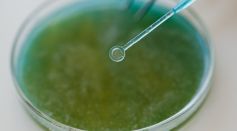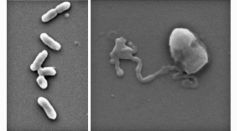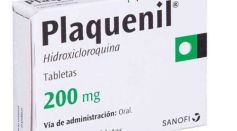Tags: Antibiotics
Antibiotics Could Help Prevent Delay of Appendectomy in Some People with Appendicitis

Bacteria Has the Ability to Survive Antibiotics Through Liquid Protein Droplets; Molecular Production Due to Stress
Biofilm-Forming Pathogens Contribute to Treatment of Infections; New Study Reveals How Nanosilver Killed 99 Percent of Bacterial Population
Live Maggots Used by the NHS as Antibiotics: Is This an Effective Technique for Cleaning Wounds?
Spider Silk: Research Reveals Cobweb's Role in Treating Wound; Scientists Attempt Detection of Antimicrobial Activity
Superbugs Overcome Drugs Normally Used Against Them; May Help in Developing Evolutionary Medicine to Prevent Antibiotic Resistance
Copper Atoms Kept Closer to Combat Bacteria, New Approach Shown in Study

Smart RNA Targeting Could Be the Solution for Antibiotic-Resistant Bacteria

Antibiotic-Resistant Bacteria Found in Dog Food Across Europe, Making It an International Health Risk
Bacteriophage Viruses Could Help in the Fight Against Antibiotic-Resistant Bacteria
Scientists Reveal Inner Workings of Powerful Antibiotic of "Last Resort" That Eliminates Bacteria

Nanothin Layer on Wound Dressings Kills 99% of Antibiotic-Resistant Bacteria
New Nanothin Coating Kills Superbugs, Fungi, Bacteria: Here's How It Works

Antibiotics: Inefficacy, Need for New Types, and Solution To Such Resistance

Antibiotics Can Increase Risk of Crohn's Disease

How Does Bacteria Behave in Space?
The American Beautyberry: Helping Antibiotics Work Effectively
Princeton Researchers Discover 'Poison Arrow' Antibiotic That Resists Immunity

Are Malaria Drugs the Solutions to the Worsening COVID-19 Pandemic?

Antibiotic-Resistant Bacteria May Now Be Controlled: Researchers Developed Antibacterial Liquid Metals Aims to Destroy These Bacteria
Most Popular

Starlink Satellite Explodes in Orbit; SpaceX Confirms It'll Re-Enter Earth

Aurora Phenomenon: How Geomagnetic Storms and Space Weather Are Lighting Up the World

Ocean Warming Explained: Why Climate Science Shows Sea Temperature Rise Is Speeding Up

How Wildfires Start, Spread, and Ignite: Understanding the Causes and Fire Behavior Clearly




